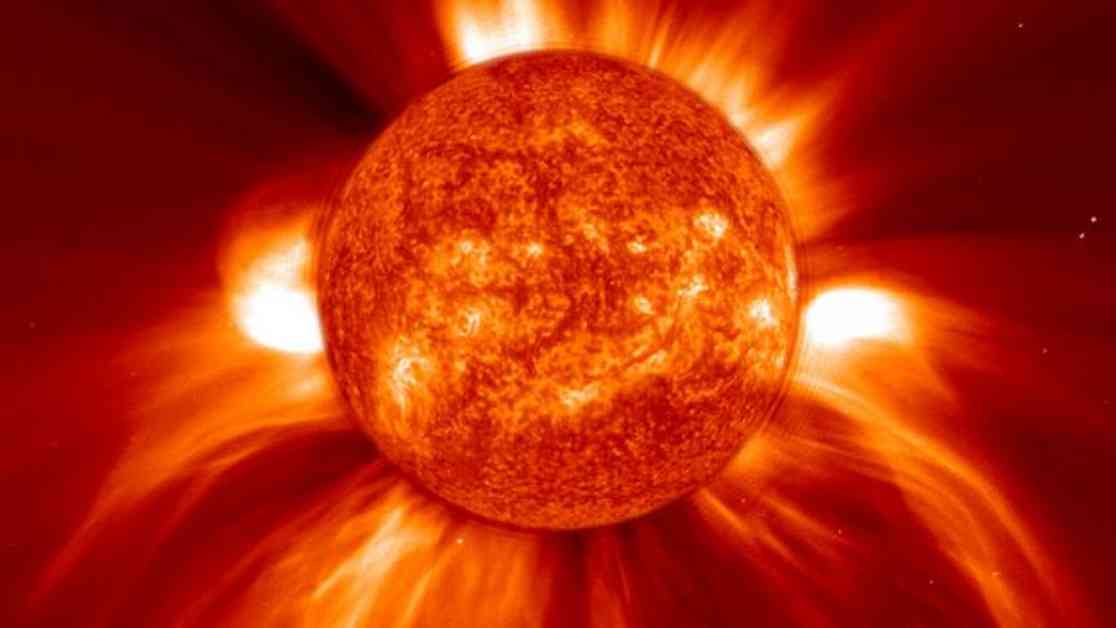Space Superstorms: A Looming Threat to Modern Life
As the Sun enters a period of heightened activity, scientists are increasingly concerned about the potential impact of a solar superstorm on Earth. While we may think of our planet as a stable and enduring entity, the truth is that it has been subjected to powerful solar events in the past that could have disastrous consequences if they were to occur today.
One such event occurred around 14,000 years ago when a massive solar superstorm bombarded Earth with high-energy particles. This cataclysmic event, which left a lasting mark on the planet, serves as a stark reminder of the power of our Sun and the potential dangers it poses to modern life.
The Role of Tree Rings in Uncovering Earth’s Past
The oldest trees on Earth, with some dating back 5,000 years, provide a unique window into the history of our planet. Through the study of tree rings, known as dendrochronology, scientists can uncover valuable insights into past events, including solar superstorms.
As trees grow and photosynthesize, they create growth rings that contain a record of the Sun’s activity. By analyzing these tree rings, researchers like Charlotte Pearson, a dendrochronologist at the University of Arizona, can piece together a timeline of solar events that have occurred over thousands of years.
In recent years, researchers have made remarkable discoveries using tree rings to uncover evidence of massive solar events that have occurred in the past. These events, known as Miyake events, have revealed disturbing insights into the turbulent history of our Sun and its impact on Earth.
The Discovery of Miyake Events
In 2012, a groundbreaking discovery was made by Fusa Miyake, a cosmic ray physicist at Nagoya University in Japan. By studying Japanese cedar trees, Miyake identified a significant spike in carbon-14, a radioactive isotope produced when high-energy particles from the Sun strike nitrogen in the atmosphere.
This spike in carbon-14, which occurred nearly 800 years ago in 774 CE, pointed to a massive burst of particles entering Earth’s atmosphere. Further studies of tree rings and ancient ice cores have confirmed the existence of multiple Miyake events over the past 15,000 years, each indicating a surge in cosmic radiation and particles originating from the Sun.
The Potential Impact of Solar Superstorms
The discovery of Miyake events has raised concerns about the potential impact of a solar superstorm on modern society. These events, which are thought to occur at intervals of 400 to 2,400 years, could have devastating consequences for our technology-dependent world.
Geomagnetic storms, caused by solar superstorms, can disrupt satellite communications, power grids, and even the internet. The Carrington Event of 1859, the most powerful solar storm in recent history, caused widespread electrical surges that knocked out telegraph lines around the world. A similar event today could lead to catastrophic failures in our technology infrastructure, resulting in trillions of dollars in economic losses.
Preparing for the Unthinkable
As scientists continue to study Miyake events and their potential implications, the need for preparedness becomes increasingly urgent. The unpredictability of solar superstorms, combined with their potentially catastrophic effects, highlights the importance of developing mitigation strategies to safeguard our technology and infrastructure.
From shielding satellites and power grids to implementing emergency response plans, governments and organizations must take proactive steps to prepare for the possibility of a solar superstorm. The lessons learned from past events, such as the Carrington Event and Miyake events, serve as a stark reminder of the need to be vigilant in the face of solar threats.
Looking to the Future
As researchers delve deeper into the mysteries of solar superstorms, the hunt for more Miyake events continues. By studying tree rings and ice cores, scientists hope to uncover additional evidence of past solar events and gain a better understanding of their potential impact on Earth.
The discovery of a superstorm from 14,300 years ago serves as a sobering reminder of the power of the Sun and the vulnerability of our planet to solar threats. While we may not be able to predict when the next solar superstorm will occur, we can take steps to prepare for its potential consequences and ensure that our technology and infrastructure are resilient in the face of such events.
In conclusion, the threat of space superstorms looms large over modern life, reminding us of the immense power of the Sun and the need for preparedness in the face of potential solar threats. By studying past events like Miyake events and developing mitigation strategies, we can better protect our technology and infrastructure from the devastating effects of solar superstorms.













